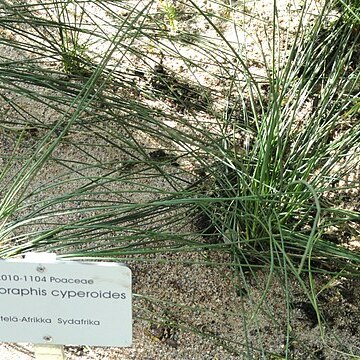Spiny, woody perennial, up to 0.8 m tall. Leaves lanceolate, pungent; ligule a fringe of hairs. Inflorescence with alternate primary branches usually more than twice their own length apart, occasionally ending in a spine. Spikelets 4-8 mm long, densely clustered, almost entirely hiding the branches, many-flowered; glumes equal, shorter than spikelet; lemma glabrous or with short hairs, awnless.
Rhizomatous, spiny, spreading grass, primary branches of panicle widely spaced, to more than twice their length apart and spikelets usually clustered and appressed, 4-8 mm long.

